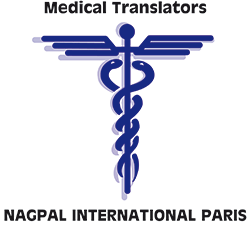
Medizinische Übersetzer
Paris • Cambridge • New York
65, rue Pascal 75013 Paris Frankreich
Tel: +33 (0)1 47 07 55 28
Fax: +33 (0)1 43 37 11 46
E-mail:
Mitteilung des Vorsitzenden
zum Thema Qualität
Qualitätsrichtlinien für unsere Mitarbeiter
Beispiele unserer Arbeit
Vitamin D (von Französisch in Englisch)
Pharmacologie clinique. Bases de la thérapeutique.
GIROUD J.P., MATHE G. et MEYNIEL G.
2ème édition, 1988
Clinical pharmacology. Therapeutic basis.
By GIROUD J.P., MATHE G. and MEYNIEL G.
2nd edition, 1988.
VITAMIN D
by A. Frédérich, F. Dürr
As currently understood, the term “vitamin D” is a very general term covering a number of substances varying from vitamin D itself to various metabolites and analogues more or less related to this molecule. Vitamin D itself does merit to be considered to be a vitamin, capable of preventing and treating deficiency disorders, the metabolites and analogous substances have actions and indications which are relatively specific. For example calcitriol, the most important of this group, has all the characteristics of a steroid hormone and its use would fall more in the category of hormone therapy. Incidentally, the toxicity of these molecules is not negligible, comparable to and often greater than that of vitamin D. Hence it is important to understand the mechanisms of action, the effects and plasmakinetics of these various products if they are to be used properly [1-9].
RECALL OF PHYSIOPATHOLOGY:
DEFICIENCY STATES AND DISORDERS OF VITAMIN D METABOLISM
There seem to be two kinds of pathological situations in which vitamin D is implicated. These can be either deficiency states (for example lack of sunlight and nutritional factors), or abnormalities of biosynthesis or metabolism, a kind of hormone disorder. It is this latter subject which has received greatest attention recently [1, 2, 3].
VITAMIN DEFICIENCY:
Clinical presentations: rickets and osteomalacia
Vitamin D deficiency is often latent and silent, detectable only occasionally by a slight hypocalcemia which may or may not translate as symptoms. But the deficiency produces in the long run mainly skeletal abnormalities. These are described by two terms: rickets for children and osteomalacia for adults. Even though the original abnormality (a deficit in phosphate and calcium) is the same, the clinical picture is much more florid in rickets because the disturbances in the skeleton occur during growth.